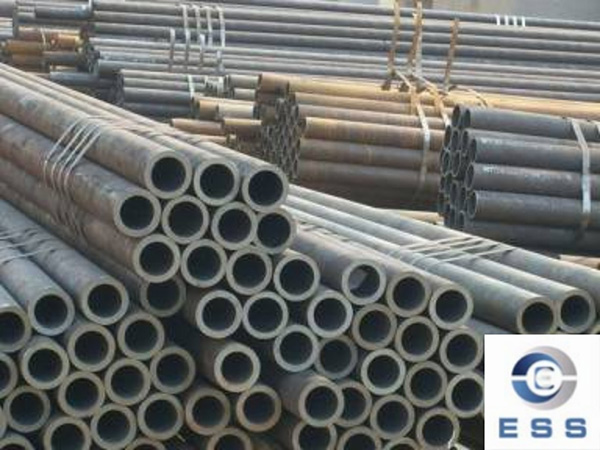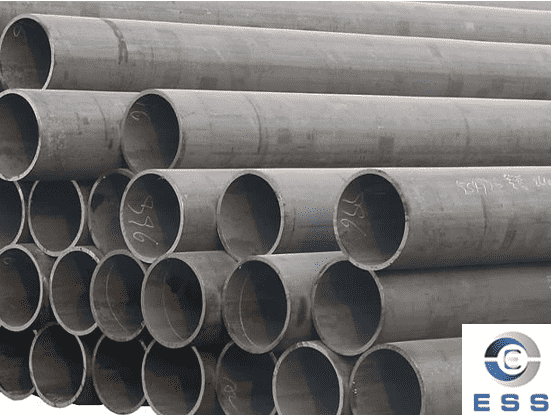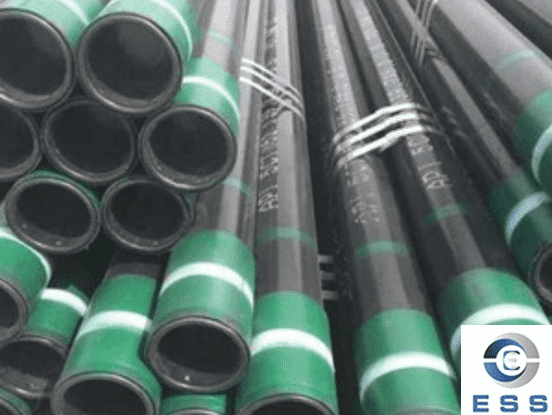Seamless carbon steel pipe cross rolling process
The cross-rolling process of seamless carbon steel pipes is a rolling process in which the rolled piece rotates, deforms along its own axis, and advances between two or three rollers with the same rotation direction and intersecting (or tilted) longitudinal axes.
Cross rolling is a rolling method between longitudinal rolling and cross rolling. Cross rolling is mainly used for piercing rolling of pipes (
seamless pipe production) and periodic cross-section rolling of steel balls.

There are 3 types of inclined roll forming:
(1) Cross-rolling applied in the production of seamless carbon steel pipes, including cross-rolling piercing, cross-rolling extension, straightening and cross-rolling sizing (see sizing);
(2) Cross-pass rolling, which is characterized by rolling rolling grooves with variable height and variable pitch on the surface of the roll, which can roll rotary products with variable length and cross-section, such as steel ball rolling, screw rolling, etc. ETC. ;
(3) Profile cross-rolling. Three rotating tapered rollers are controlled by hydraulic or mechanical templates to move radially relative to the center of the rolled piece to complete the rolling of the variable-section shaft. Profile cross-rolling is mainly used to produce longer shaft products with variable cross-sections, such as textile spindles, knives, scissors, surgical instruments and other blanks.
The cross-rolling method has been widely used in the production process of thermally expanded seamless carbon steel pipes. In addition to being used in major thermal expansion processes such as piercing, it is also used in basic processes such as pipe rolling, leveling, sizing, stretching, diameter expansion, and spinning. The difference between cross rolling and longitudinal rolling and cross rolling mainly lies in the fluidity of the metal. The main direction of metal flow in longitudinal rolling is the same as the roll surface, while the main direction of metal flow in cross rolling is the flow direction of the roll surface. Same as the roller surface. Cross rolling is located between longitudinal rolling and cross rolling. The flow direction of the deformed metal is at an angle to the direction of movement of the deforming tool roller. In addition to moving forward, the metal also rotates around its own axis, which is a spiral forward movement. There are two types of cross-rolling mills used in production: two-roller systems and three-roller systems.
Nowadays, the perforation process in the production of thermally expanded seamless carbon steel pipes is more reasonable, and the perforation process has been automated. The entire process of cross-rolling and piercing can be divided into 3 stages:
1. The process is unstable. The metal at the front end of the tube blank gradually fills the deformation zone, that is, the tube blank and the roller begin to contact the front end metal and exit the deformation zone. There are primary occlusion and secondary occlusion at this stage.
2. Stabilization process. This is the main stage of the piercing process, starting from the metal at the front end of the tube blank entering the deformation zone until the metal at the tail end of the tube blank begins to leave the deformation zone.
3. The process is unstable. The metal at the end of the tube blank gradually leaves the deformation zone until all the metal leaves the roll.
There is a clear distinction between stable and unstable processes, which can be easily observed during production. For example, there is a difference between the size of the head and tail and the size of the middle part of the capillary. Generally, the diameter of the front end of the capillary tube is large, the diameter of the tail end is small, and the middle part is consistent. Large head-to-tail dimensional deviation is one of the characteristics of unstable processes. The reason for the large diameter of the head is that the front end metal gradually fills the deformation zone, and the friction force on the contact surface between the metal and the roller gradually increases. It reaches the maximum value in the complete deformation zone, especially when the front end of the tube blank encounters the plug. Due to the axial resistance of the plug, the metal is resisted in the axial extension, so the axial extension deformation decreases and the lateral deformation increases. Additionally, there is no outer end restriction, resulting in a larger front end diameter. The diameter of the tail end is small because when the tail end of the tube blank is pierced by a plug, the resistance of the plug is significantly reduced and it is easy to stretch and deform. At the same time, the amount of lateral roll is small, so the outer diameter is also small.













 Eastern Steel Manufacturing Co.,Ltd not only improve product production and sales services, but also provide additional value-added services. As long as you need, we can complete your specific needs together.
Eastern Steel Manufacturing Co.,Ltd not only improve product production and sales services, but also provide additional value-added services. As long as you need, we can complete your specific needs together.










